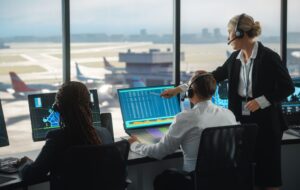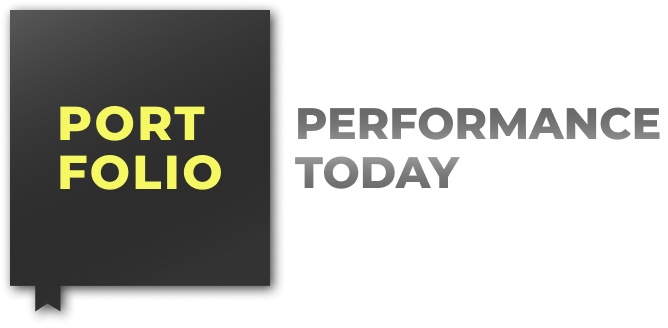
Milton Friedman famously recognized that policy change only happens in crises:
Only a crisis — actual or perceived — produces real change. When that crisis occurs, the actions that are taken depend on the ideas that are lying around. That, I believe, is our basic function: to develop alternatives to existing policies, to keep them alive and available until the politically impossible becomes the politically inevitable.
Perhaps “rational” planning and decision-making would be better, but we are obliged to make do with the political system we have. And the chronic dysfunction of that political system has brought us to the point where the US “air traffic control” (ATC) system is one critical incident short of crisis.
The problem is stark: the US — the home of high-tech capitalism and the busiest airspace in the world — has an antiquated, expensive, slow, and dangerous system for directing the paths of aircraft. Considering the alternative arrangements of nations most “like” the US — Canada, France, Germany, and the UK — it is clear that the US could do better.
First, consider the total cost of the ATC system, divided by the number of flight hours. Even given the enormous number of flights in the US, our cost per hour is the highest among the five nations.

Next, consider the average delay per flight (the number of flights that are on time, or other measures, all show this same effect):

The US has three times the average delay of Canada, and double that of the UK. The average delay difference can be misleading, however, since delays compound in a given day, and can propagate across the system. The three worst airports for delays, in the summer of 2022, were Kennedy, LaGuardia, and Newark, all in the New York area. Sixty percent of flights to those airports did not arrive “on time” (the average tardy time for those flights was 100 minutes, a remarkably bad level of performance).
Many of the busiest parts of the ATC system in the US use paper strips to keep track of flights, and more than half of the computer systems are so antiquated that they still use software and hardware that requires changing floppy disks to manage traffic. But the failure to update and modernize is only a symptom of the real problem: bureaucratic structure on permanent ground stop.
Alternative Organizational Structures
Two dimensions, on a broad scale, determine how nimble and responsive an ATC system can be. The first is the choice of whether the actual flight direction services will be provided by a government-appointed set of bureaucrats, or by an independent organization that can make its own decisions. The second is whether the provider of ATC services will regulate itself, or have an independent oversight authority.
Of our five example countries, the two worst-performing air systems — US and France — have created a completely bureaucratized and insulated system of provision, and then vested regulatory authority in that same agency. It’s hard to believe that anyone who thought about it for more than five minutes would vest such power and importance in an agency that is completely protected from electoral and market forces, and then ask that agency to evaluate itself, but that’s where we are.
Consider each of the three alternatives, Canada, Germany, and the UK.

Canada’s ATC system is run by Nav Canada, a private, non-profit corporation established in 1996. Unlike the UK model, Nav Canada has no government ownership. It is funded entirely by service fees, and its governance includes stakeholders such as airlines, unions, and the government (in a non-voting observer role). Nav Canada is often cited as a global model for ATC reform due to its high levels of efficiency, successful implementation of new technologies, and customer-focused management. Its not-for-profit status reduces the risk of underinvestment for short-term profit, but its independent status reduces the risk of underinvestment for short-term budgetary concerns, also.

Germany’s ATC is handled by DFS Deutsche Flugsicherung GmbH, a government-owned but independently corporatized entity created in 1993. DFS operates independently from Germany’s transport ministry and is financed by user fees. Its legal status as a private company wholly owned by the state allows DFS managerial autonomy while preserving public accountability. DFS has made significant investments in automation and cross-border cooperation through the EU’s Single European Sky initiative. However, labor disputes and capacity constraints at busy hubs remain challenges. Still, since regulatory authority and provision are separated, the conflict of interest that vexes the US system is avoided.

The UK pioneered ATC privatization with the partial privatization of National Air Traffic Services (NATS) in 2001. NATS operates as a public-private partnership: 49 percent is owned by UK airlines, five percent by staff, and 46 percent by the government. This model aims to balance efficiency with public oversight. NATS is funded by user fees and has demonstrated strong performance in modernization and cost control. The fact that the major ownership stake lies with the airlines means that the pressures to reduce waste and delays can actually be felt by the organization.
Opportunity Crisis
It’s hard to see all this as an opportunity, but that’s just what it is. As of May 10, experts estimate the overall US air traffic system is operating with a staffing shortage of more than three thousand controllers nationwide. Accelerated retirements, mandatory overtime, and substantially increased flight delays are the norm. Worse, there are genuine concerns that there will be a significant, and entirely avoidable, collision in the air or on the ground as a consequence.
Of course, the staffing crisis is particularly acute in the Northeast, one of the busiest and most congested airspaces in the world. And leading the way is Newark airport (EWR), which we might label crisis central. Unbelievably, during peak evening hours, only one fully certified controller and one trainee have been made responsible for managing up to 180 takeoffs and landings. The normal staffing level is fifteen, not two.
Newark is not the only problem area. The Philadelphia airspace has a staffing shortage of at least 15, and Boston is short at least 40 full-time controllers. Since training takes at least a year, this shortage is going to be with us for a while.
If we do not follow Canada’s lead, and privatize now, there is another obvious, “off the shelf” solution: convert to a non-profit run by the airlines and airports, funded by landing fees. While it’s true that passengers want lower prices for tickets, the non-price costs of delays and frustrating uncertainties about arrival times are creating a real opportunity and activating demand. We are at least three thousand controllers short already, so there is no better time to convince passengers to pay up and carriers to make the switch. It will be much harder to hire the new controllers, train them, and then try to convert the system to a non-governmental corporation.
The new entity would still be regulated by the FAA, just as now, but privatization would prevent the conflict of interest in the current system, where the FAA is both provider and self-regulator.
Robert Poole of Reason wrote a blueprint for privatization in 1996, and the outlines of that proposal still apply today. President Trump has announced at least a framework of support for the proposal, and it is time to move forward as quickly as possible. Rather than using half-measures to mitigate the current crisis, we should take the opportunity to implement a permanent solution.
Read on: Pilot Shortage: A Story of Stalled Supply and Rising Demand
